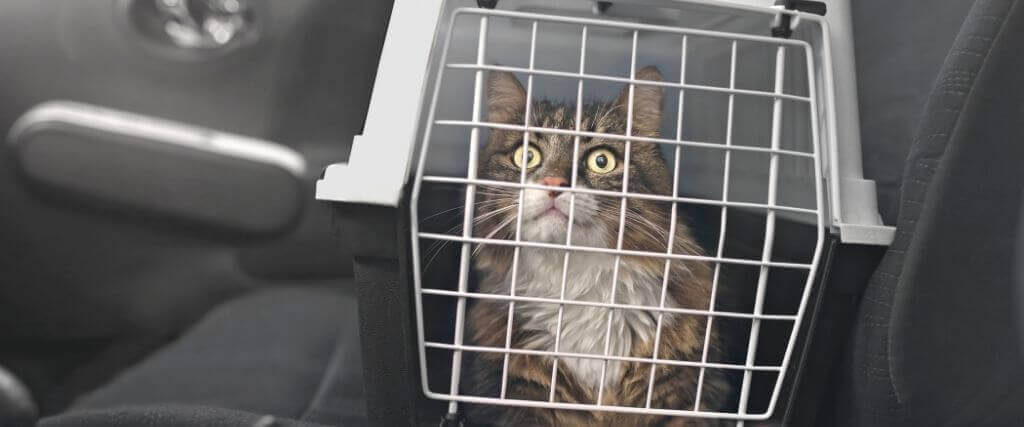One of the challenges many cat owners face is getting their cat to the vet clinic. Many of us are fellow cat parents, so we can appreciate the arduous task this can be. As veterinarians, we also know that regular vet care is essential for our feline friends' overall health and longevity. Many cat owners put off wellness exams and other vet visits because of this challenge, but doing so can have dire consequences. The longer you wait to get the cat the care they need, the more likely they are to have a poor prognosis. This is especially true of cats because they are stoic about their pain and, by the time they have symptoms, whatever illness they have has likely already progressed. But all is not lost! Thankfully, there are many things you can do to make traveling with your cat easier for both of you as part of your preventive care routine. Who knows—maybe you'll end up with a partner for your next road trip!

Tips For Conquering the Cat Carrier
One of the most important things you can do is to conquer the cat carrier. A cat that is comfortable with their carrier will feel safer and more relaxed when traveling outside the home.
Try the following tips to help your cat learn to enjoy the carrier:
- Leave the carrier out in a room frequented by your cat (living room, bedroom, etc.), so your cat can explore their carrier at their own pace.
- Place treats or toys in the carrier to encourage your cat to go inside on their own. Try using a synthetic feline facial pheromone spray such as Feliway (best when used at least 30 minutes before allowing your cat to enter the carrier) to encourage your cat to explore the carrier.
- Take it slow: don’t force your cat to go in the carrier! It may take several weeks for your cat to learn to feel comfortable in there and dare to go inside on their own.
- Once your cat is comfortable exploring and spending time in the carrier, you can try bringing your cat in the carrier out to your car. Don’t turn the car engine on – let your cat get used to being in the car first without the added stress of a noisy engine. Try offering your cat treats or a toy in the carrier to make the experience in the car more positive.
- If your cat seems relaxed in the car, turn the engine on without driving the car anywhere.
- Eventually, work your way up to driving around the block or taking short car rides with your cat. Remember, the most important thing you can do is to take it slow!
Go here to read more tips for traveling with your cat, courtesy of the Feline Veterinary Medical Association (FelineVMA).

Cat Microchipping is a Must
You might be asking yourself, "Wait, why would I need my cat microchipped if I'm bringing them to the vet in a cat carrier?" While we don't recommend that anyone ever travel with a cat without using a carrier, some cats may flat out refuse. Also, emergencies happen, and it may be a matter of getting your cat to the vet quickly. A scared or injured cat is an unpredictable one, that's for sure.
As veterinarians, we also see far too many lost cats get turned in without microchips, and, at that point, there's nothing we can do but wait and hope that they are reunited with their owners at the shelter. We recommend that even indoor cats get microchipped because, again, accidents happen. Doors and windows can be left open, or something may spook your cat enough to cause them to dash out the door at a perfectly inopportune time.
Many kittens get microchipped when they come in for a spay or neuter but, if your cat still hasn't been microchipped and you want to put this simple and effective safeguard in place, we'd love to help. If you have any other questions about how to keep your cat safe while in the car or about the microchipping procedure, please don't hesitate to give us a call!

